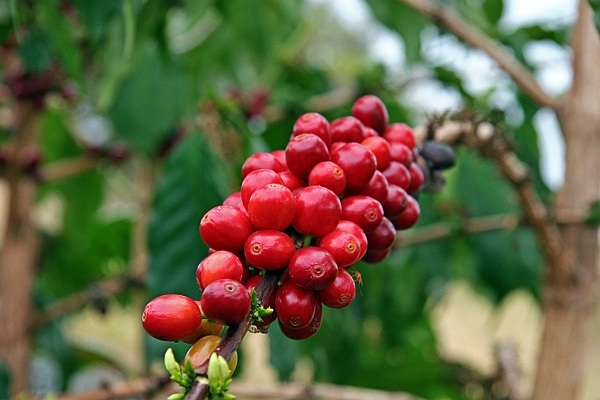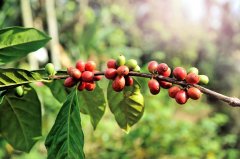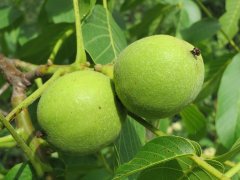Are Sidamo and Gucci the same producing area? what are the differences between Sidamo and Guji coffee beans?
Coffee that is easy to water

Product name: Sidamo Guji Sidamo Guji Bildiimoo Lot#2
Country: Ethiopia Ethiopia
Producing area: Sidamo Sidamo Guji
Grade: Grade 1
Treatment method: washing treatment method Washed Process
Variety: Ethiopian native species Ethiopian Heirloom
Altitude: 1900 m
Flavor: bright citrus sour flowers, thick fruit juice aftertaste
Nensebo, on the west side of Arsi, has a private processing plant, Gora Kone Washing Station, which collects coffee cherries from different small farmers around it. Nensebo is a small area in Oromia, Ethiopia. Valleys account for 70% of the area, the remaining areas are drylands and plateaus, and natural drinking water accounts for only 4.6%. Coffee is an important commercial crop, with a planting area of more than 5,000 hectares. The total output in a year is about ten containers, five containers washed and five containers in the sun. Usually a batch is about 150 bags of shell beans, equivalent to 100 bags of raw coffee beans.
About 800 small farmers transport small quantities of coffee and cherries to the processing plant every day. usually each coffee farmer owns less than one hectare of farmland, most of which are grown organically, mostly using organic compost. A coffee tree produces no more than two hundred grams of raw coffee beans, and farmers usually have less than 1500 coffee trees per hectare.
Before actually entering production, farmers will first divide the hand-picked coffee fruits into mature and immature ones by manpower. After the pulp is removed by Agarde pulp removal machine, the pulp is graded through density. Then the shell beans will be fermented in water for about 24-48 hours, depending on the weather conditions. Through the flow of water through the channel, different densities of shelled beans will be distinguished again. Soak in clean water for about 12-24 hours before moving to the drying table. The beans will dry in the shade first. Then, depending on the weather, the African scaffolding will be exposed to sunlight for 10-12 days to dry. Coffee beans are covered with a black net at noon and at night.
Important Notice :
前街咖啡 FrontStreet Coffee has moved to new addredd:
FrontStreet Coffee Address: 315,Donghua East Road,GuangZhou
Tel:020 38364473
- Prev

The difference between Kenyan Water washing and Solar treatment African drying beds customized Kenyan sun-dried beans
For the exchange of professional baristas, please follow the coffee workshop (Wechat official account cafe_style) Product name: Endabeth Manor Endebess Estate tanning batch Natural AB country: Kenya Kenya producing area: Kitale Town Elgon Mountain Mount Elgon Grade: AB treatment method: sun treatment Natural Process varieties: Batian, Rui
- Next

What is the difference between Yega Xuefei and Sidamo Coffee producing areas? introduction to Yega Xuefei washing Biloya
For the exchange of professional baristas, please follow the coffee workshop (Wechat official account cafe_style) Product name: Yega Sheffield Biloya Yirgacheffe Beloya country: Ethiopia Ethiopia producing area: Yega Sheffield Gedeo Yirgacheffe Gedeo Grade: Grade 1 treatment method: washing method Washed Process Variety: Ethiopian native species Ethiopian H
Related
- Detailed explanation of Jadeite planting Land in Panamanian Jadeite Manor introduction to the grading system of Jadeite competitive bidding, Red bid, Green bid and Rose Summer
- Story of Coffee planting in Brenka region of Costa Rica Stonehenge Manor anaerobic heavy honey treatment of flavor mouth
- What's on the barrel of Blue Mountain Coffee beans?
- Can American coffee also pull flowers? How to use hot American style to pull out a good-looking pattern?
- Can you make a cold extract with coffee beans? What is the right proportion for cold-extracted coffee formula?
- Indonesian PWN Gold Mandrine Coffee Origin Features Flavor How to Chong? Mandolin coffee is American.
- A brief introduction to the flavor characteristics of Brazilian yellow bourbon coffee beans
- What is the effect of different water quality on the flavor of cold-extracted coffee? What kind of water is best for brewing coffee?
- Why do you think of Rose Summer whenever you mention Panamanian coffee?
- Introduction to the characteristics of authentic blue mountain coffee bean producing areas? What is the CIB Coffee Authority in Jamaica?

